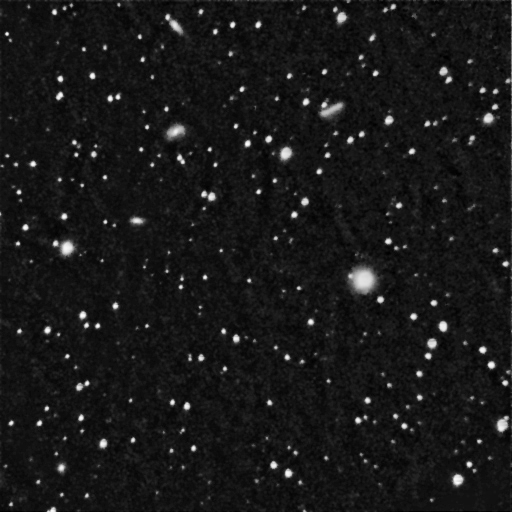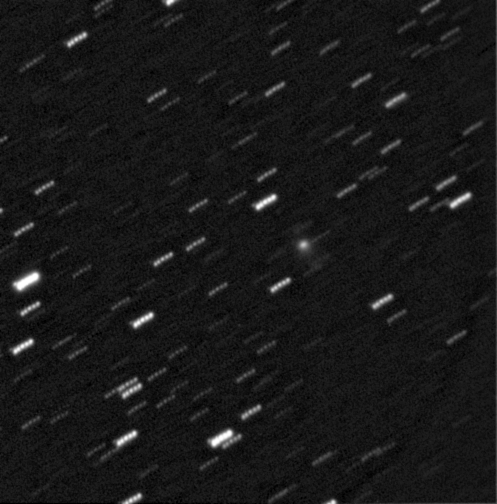
Comet 2004 U1 LINEAR. December 16, 2004.
Combination of 5, 3 minute images, SBIG ST-9E CCD.
16" f/10 schmidt-cassegrain with f/6.3 focal reducer.
Discovered in late October 2004, comet 2004 U1 LINEAR is typical of many of the comets discovered by the large surveys. Around 18th magnitude, with a perihelion of over 2.5 AU. This comet made a very favourable perihelion passage since it was at opposition when it passed perihelion. As a result, it brightened to around 16th magnitude. Only a hint of a tail is visible on the images, however this is to be expected as any tail would be pointing almost directly away from the Earth.

On December 19, the comet drifted past a rich field of galaxies, that appear to form a cluster centred on NGC 2332 and NGC 2340. In the first image below, the comet is difficult to distinguish from the surrounding galaxies. However, in the following image, which is a combination of 5 images centred on the comet's motion, the comet is clearly seen.
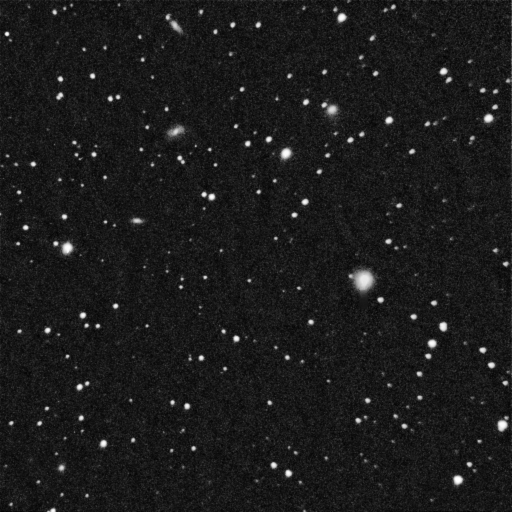
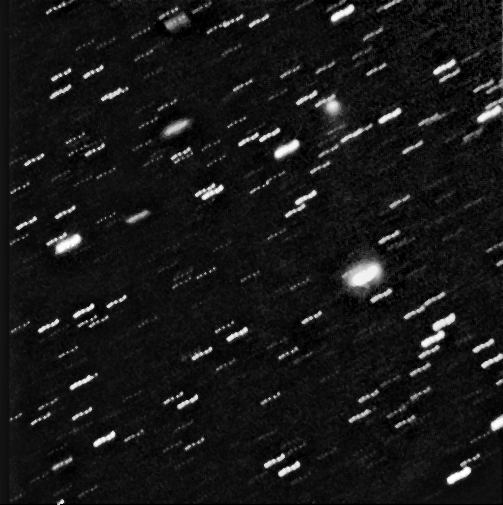
In this image, there is a hint of a faint tail. This is seen a little easier in the next image, which is the same as the above image, except a median filter has been used when combining the 5 individual images. This technique removes most of the stars. A short tail is visible heading down towards the bright star.
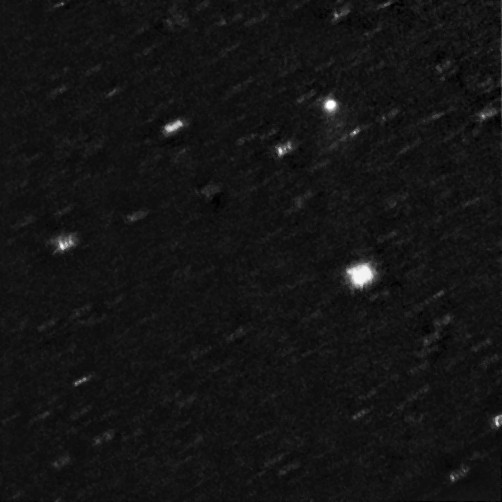
This final image is the same 5 images as before, however the images have been aligned on the stars, letting the comet trail. This shows the galaxies well. The galaxy close to the top of the image is the 14.8 magnitude PGC 20266, while the small spiral below it is the 15.6 magnitude PGC 20263. The small, faint galaxy to the lower left of PGC 20263 has no designation. Several other fainter galaxies are visible in the image.
